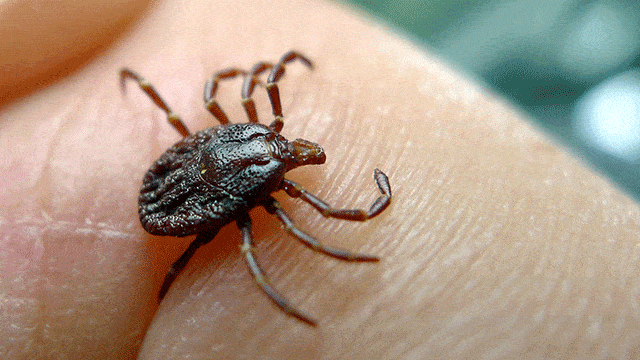
The American dog tick is usually found on dogs, but occasionally targets larger mammals like cattle and humans.
Professor Neil Chilton is asking everyone in Saskatchewan to send him their ticks.
Chilton, a parasitologist and biology professor at the University of Saskatchewan, is researching Saskatchewan’s tick population. Chilton’s research examines where tick species are found in the province, as well as what bacteria they carry.
Ticks are hard-shelled insects that latch onto passers-by when brushed against. They feed on human and animal blood by inserting their heads into a small cut they make once they have found an area of soft skin.
One of the primary focuses of Chilton’s research is which tick species inhabit Saskatchewan and where they are located. To find this out, Chilton and his team have asked the public for help by sending in ticks they have encountered during the summer.
This system has been highly successful for Chilton, who has recieved ticks from all over the province.
Chilton’s findings show that two species make up a vast majority of the province’s tick population. The American dog tick is prevelant in eastern Saskatchewan whereas the Rocky Mountain wood tick is predominant in the western part of the province.
A recently published paper by one of Chilton’s former graduate students, the first survey of its kind done since the 1960s, explored the expanding range of these populations over the last 50 years. Chilton said that since 1960, this range has changed.
“They’ve certainly moved much further north in recent years,” said Chilton. “They could still be spreading further north. That’s why we’re continually monitoring ticks and asking people to send them in.”
Another aspect of Chilton’s research examines the bacteria that ticks carry, which varies between species and even between where the ticks are found.
Chilton’s team grinds up specimens using small hand drills to determine what bacteria the ticks are carrying. After the ticks are ground, the molecular makeup of the ticks can be examined using a microscope.
Some ticks carry bacteria that restricts the spread of pathogens. Research into this bacteria could one day be used to help control the spread of infectious diseases.
Despite their reputation as notorious bearers of Lyme disease, Chilton says that the risk of catching it from ticks in Saskatchewan is low. This is because the species of tick that carries the disease — the Blacklegged tick — is extremely rare in the province.
“We might get 2,000 ticks from the public a year and we might get one or two Blacklegged ticks,” said Chilton.
Even though the risk of encountering a Blacklegged tick in Saskatchewan is low, Chilton works with the Saskatchewan Ministry of Health to monitor their presence in the province because of the possibility of Lyme disease.
Chilton first started researching ticks as a graduate student at Flinders University in Australia. After moving to Canada 10 years ago, Chilton continued his research on ticks. His current project has been going for several years and there are plans for it to continue moving forward.
With tick season coming to a close in Saskatchewan, Chilton says his research is beginning to gear down for the year. However, Chilton also noted that Blacklegged ticks remain active well into the fall, increasing the potential that future encounters will yield information on the elusive species.
—
Photo: JohnTann/Flickr